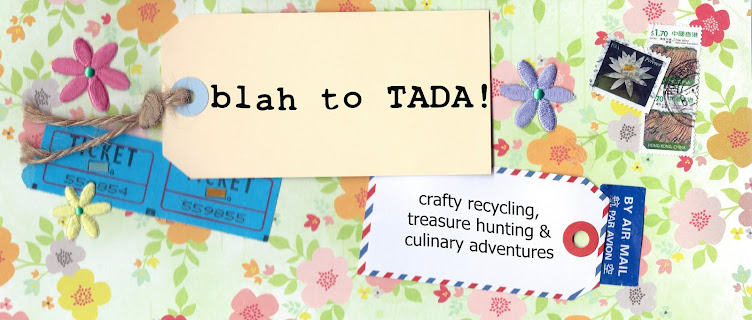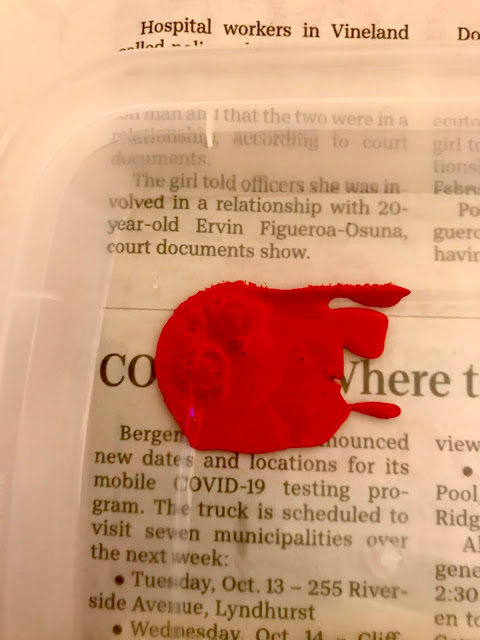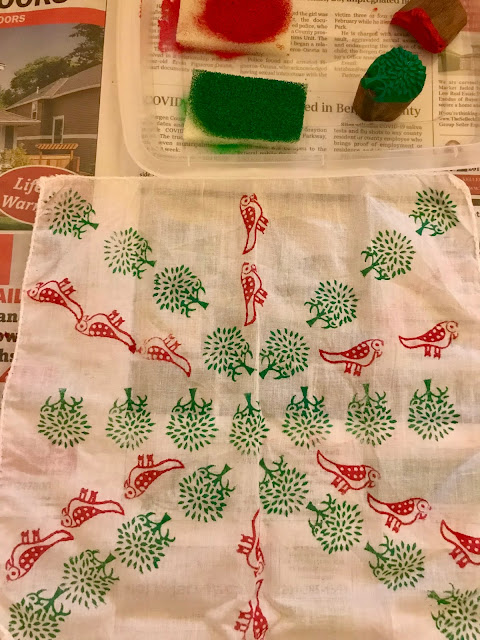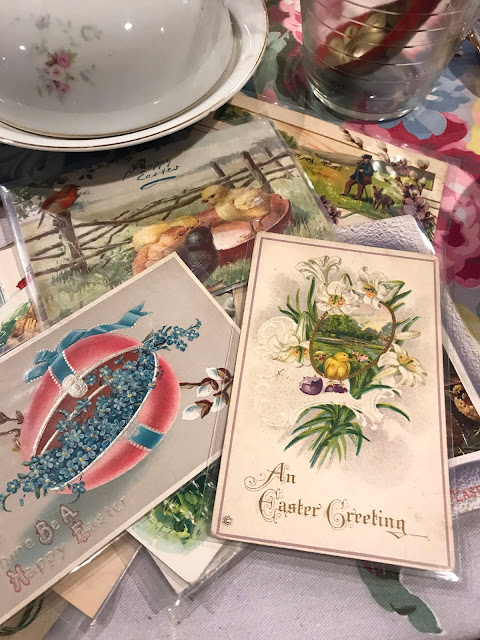Today, let me tell you about Indian Block Printing, a craft that I learned recently.
Block Printing is like stamping, but instead of rubber stamps and an ink pad, wood blocks and paint are used. It's an ancient handicraft that finds its origins in India and the skill is not learned in school but passed on from generation to generation.
I learned the basics from a class at our local library.
Each participant was given this Block Printing kit.
Here are the contents. Notice the little stamps (bird, tree, border)? These are the wood blocks. They are hand-carved using teakwood or rosewood and treated with linseed oil. I'm in love and impressed with the intricate details!
Due to the current pandemic, the class was done virtually. Our teacher Seema enthusiastically showed us all we needed to know.
The first step is to cover your work surface with a few layers of newspaper. This will protect your table and functions as a cushion when stamping.
The next step is to prepare the paint (water-based like watercolor or poster paint). Put a small amount of paint on a plate or plastic food container. If the paint is too thick, you can add a tiny amount of salt to make the paint runny. Don't use water because it will only water down the color.
On top of the paint, position a small piece of the printing pad (sponge). Using one of the wood blocks (design facing downwards), tap the sponge gently all around so that the paint lifts to the surface of the sponge.
This will be our ink pad.
Do the same process for all paint colors you intend to use.
Once satisfied with how the print registers on paper (ex. color is even and details are visible), we're ready to print on fabric.
This handkerchief was also part of the kit. Seema says cotton is the ideal fabric to use. Now is a good time to plan your design. Will you have a pattern (ex. linear or alternating) or will it be a repetition of a single print?
When you're ready, find the center of the fabric and start from there. Apply the freshly-inked block print, press down a few seconds, gently roll to the side and lift up. Keep repeating the design, making sure to ink the wood block before making a new print on the fabric.
With the first print as reference, stamp alternately from left to right so that we end up with an even number from the center.
No need to use a ruler, just eyeball it. The imperfections add charm.
















































